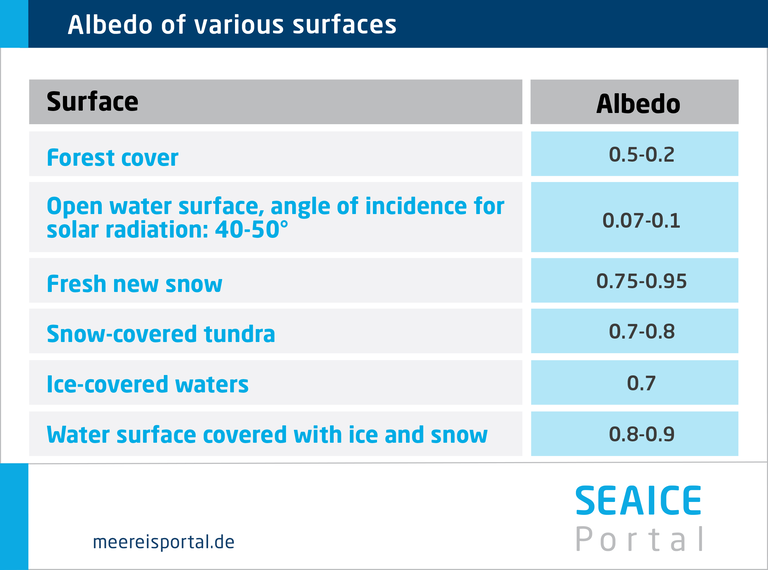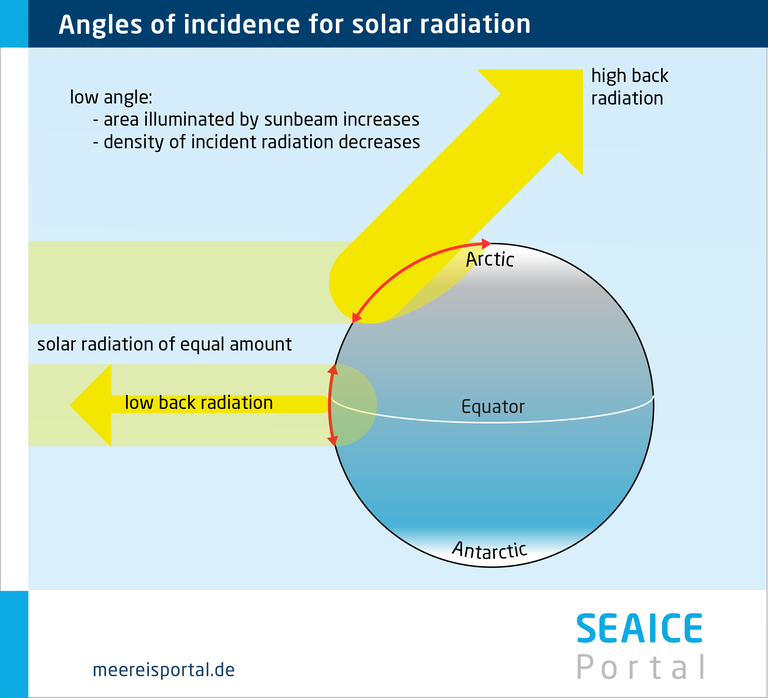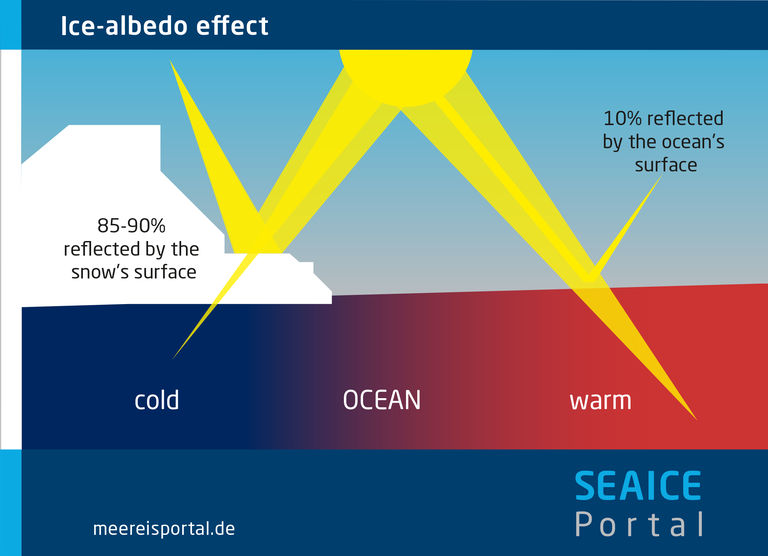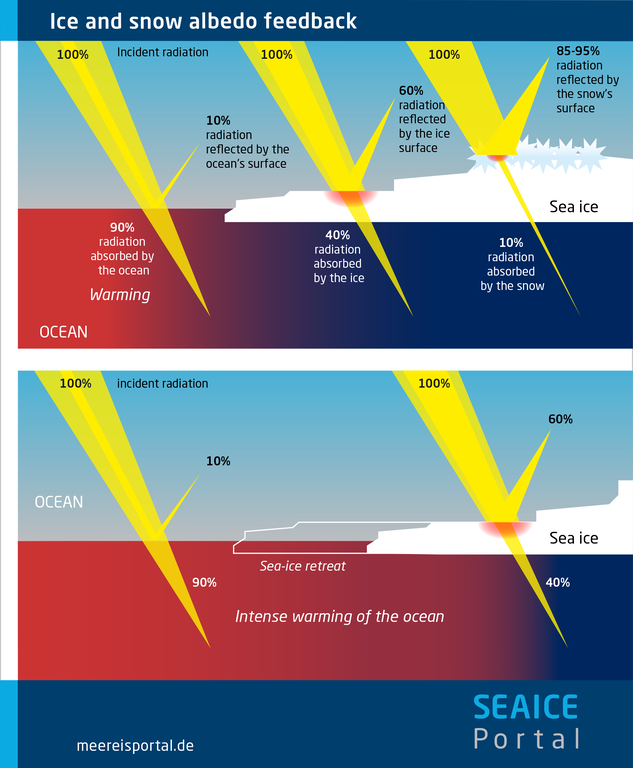Sea Ice and Energy Budget
When sunlight reaches the Earth, it is partly reflected and partly absorbed, depending on the respective surface. This reflectiveness is referred to as albedo, a word derived from Latin and essentially meaning “whiteness”. Albedo can be defined as the ratio of reflected solar radiation to incoming solar radiation, and over all wavelengths. Earth’s mean albedo is 0.3 but can vary significantly depending on the time and place. As such, the overall albedo includes not just the reflectiveness of the Earth’s surface, but also that of the atmosphere.
Snow-covered (bright) surfaces have a high albedo and reflect much of the incoming sunlight back into space. In contrast, plant-covered (dark) surfaces and the ocean have a relatively low albedo. The Earth’s albedo mainly varies due to changing cloud cover, snow, ice or vegetation cover, and changes in land use.
Ice and snow are very bright and form smooth surfaces – in physics, this is referred to as low surface roughness. Consequently, the albedo of snow-covered ice is very high and can reach 0.9. In contrast, depending on the sunlight’s angle of incidence, the albedo of water bodies is very low (0.05 – 0.25).
How Ice Influences Albedo
The effects of the polar regions’ already high albedo are further intensified by the Earth’s roughly spherical shape: unlike in the equatorial regions, in the high latitudes sunlight shines on the Earth at a relatively flat angle. This increases the area touched by the sunlight while decreasing its density. As such, the absorption of solar radiation (and resultant warming of the Earth’s surface) is quite limited. Altogether, given the high albedo of snow and ice, as well as the geographical positions of the polar regions on the spherical Earth, our planet absorbs far less energy in them than at the Equator.
The brine within sea ice affects its optical properties, creating numerous phase interfaces – i.e., transitions between a solid (ice) and liquid (brine) state. As a result, incoming sunlight is scattered in various directions. Sea ice is not transparent, allowing light to pass through it; rather, it reflects the majority back into space. Whereas, depending on the angle, seawater reflects only four to seven percent of incoming sunlight, sea ice can reflect up to 60 percent. If the sea ice is covered with snow, the number can rise to 90 percent. This is one of the reasons the polar regions stay so cold: large amounts of cold air form above their highly reflective surfaces (ice and snow) (Balburg & Breitkreuz, 2012).
The high albedo of the polar regions varies with the seasons. Firstly, the sea-ice cover changes seasonally (more ice in winter, less in summer). In addition, the snow covering thicker ice melts in summer, forming melt ponds on its surface. These blue areas absorb considerably more sunlight than the surrounding white.
Because of its high albedo, sea ice has a major influence on Earth’s energy budget. Simply put: the sun is the Earth’s main energy source and the sea ice is its main reflector.
Feedback Processes in the Climate System
Feedback processes are characteristic of the often non-linear reactions within the complex climate system and extremely important for climate variations. Positive feedbacks can massively intensify climatic forcings that are initially weak and would produce little or no effect on their own. In addition, they destabilise the climate system because, after a small initial deviation, they lead to deviations happening more quickly and expanding in scale (“overshoot”).
Conversely, negative feedbacks stabilise the climate system, returning it to its initial state after a deviation.
Ice-albedo Feedback
When the intensity of incoming solar radiation rises in summer, even the high latitudes – despite their high albedo – grow warmer, and snow and sea ice begin melting. When sea ice melts, the amount of area covered by the (until recently, underlying) darker water increases.
As a result, here much more sunlight is absorbed, not reflected. This warms the ocean, causing more ice to melt. Since this effect is self-amplifying – because melting sea ice leads to more intensive melting – it is called a positive feedback, the ice-albedo feedback effect. Due to the ice-albedo temperature feedback, all positive and negative temperature changes – whether natural or anthropogenic – are intensified at the poles. In climate research, this is referred to as “polar amplification”. In the Arctic, the ice-albedo temperature feedback is having a tremendous effect: due to anthropogenic climate change, the High North is warming at twice the speed of most other regions.




